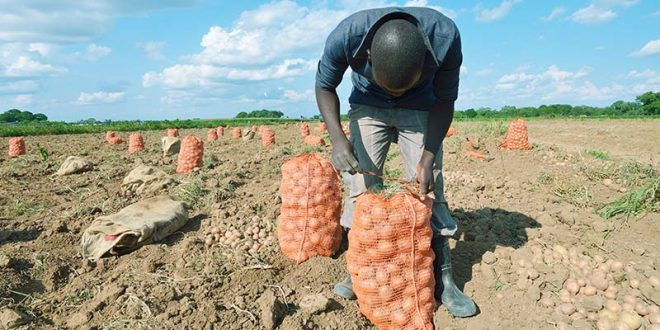The combination of heightened local potato production and reduced disposable incomes in some households has led to a significant decrease in demand for table potatoes in Zimbabwe. This shift in demand dynamics has resulted in a 100 percent drop in potato prices from June to July.
Earlier in the year, the country set a target of cultivating 6,750 hectares of Irish potatoes, primarily through members of the Horticultural Development Council (HDC).
Market data collected by Knowledge Transfer Africa (KTA) revealed a steady increase in potato prices up to US$14 per 15-kilogram extra-large pocket by June 12. However, prices have since plummeted, with the same pocket size now priced at US$7, marking a 100 percent decline. Large pockets that were priced at US$13 have also fallen to US$6.
Dr. Charles Dhewa, the CEO of KTA, attributed the sharp decline in potato prices to the surge in local production coinciding with diminishing disposable incomes. Consumers have begun shifting from Irish potatoes to alternative products like sweet potatoes, rice, macaroni, and spaghetti.
Mr. Peter Steyl, chairman of the Zimbabwe Seed Potatoes Companies Association (ZSPCA), echoed Dr. Dhewa’s sentiments, emphasizing that the decline in potato prices was primarily driven by the decrease in consumers’ purchasing power.
The government’s strategic focus on potato cultivation for food security has led to a ban on table potato imports since 2010, encouraging increased local production. This policy has not only eliminated the need for potato imports but has also fostered collaborations between farmers and agro-processors to boost production, market access, and sustainability.
As a result of import substitution policies and collaboration initiatives, Zimbabwe has witnessed a 100 percent rise in homegrown table potato cultivation, with farmers engaging in seed production to meet the growing demand for potatoes in the market.







